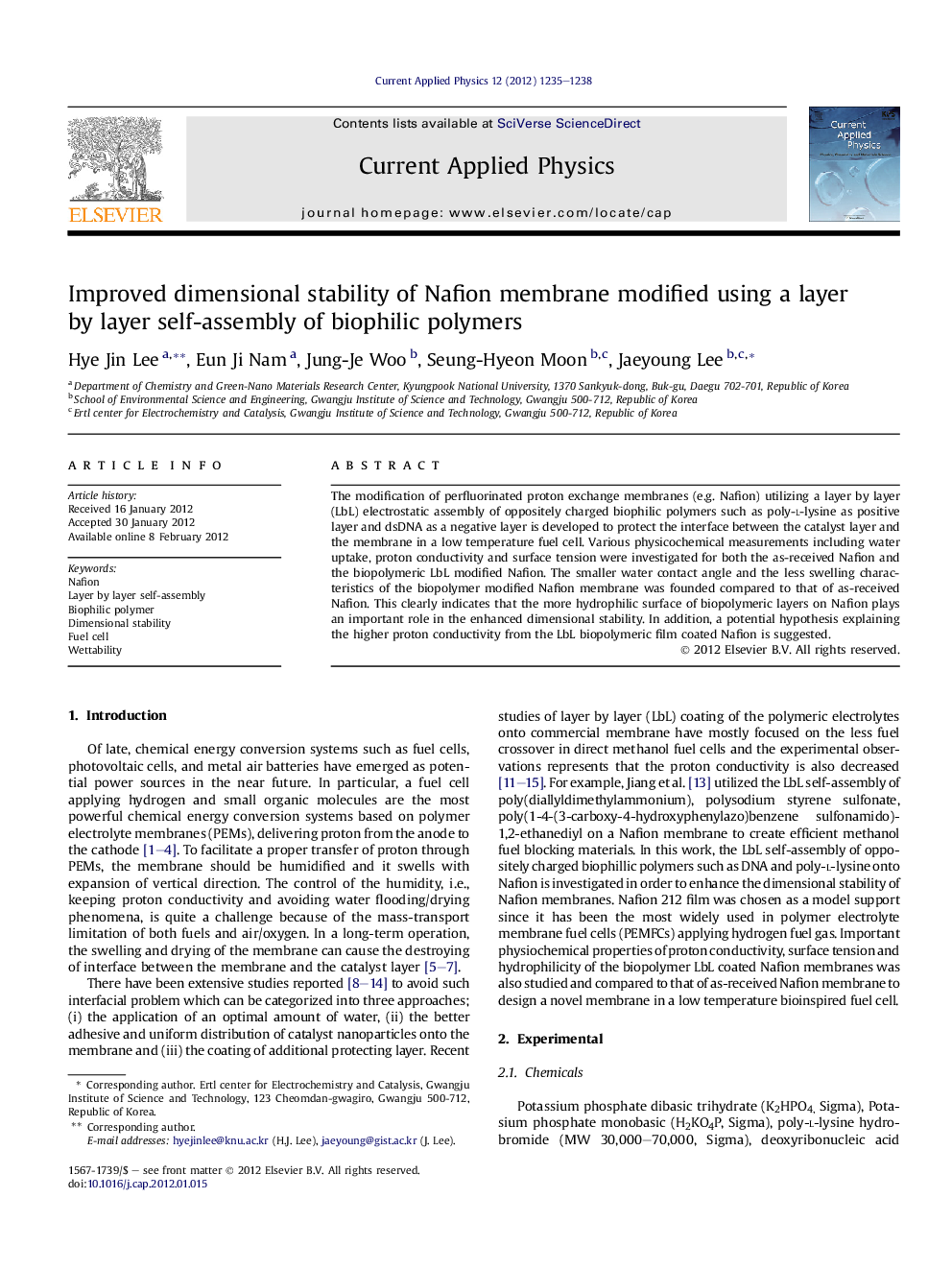| Article ID | Journal | Published Year | Pages | File Type |
|---|---|---|---|---|
| 1786724 | Current Applied Physics | 2012 | 4 Pages |
The modification of perfluorinated proton exchange membranes (e.g. Nafion) utilizing a layer by layer (LbL) electrostatic assembly of oppositely charged biophilic polymers such as poly-l-lysine as positive layer and dsDNA as a negative layer is developed to protect the interface between the catalyst layer and the membrane in a low temperature fuel cell. Various physicochemical measurements including water uptake, proton conductivity and surface tension were investigated for both the as-received Nafion and the biopolymeric LbL modified Nafion. The smaller water contact angle and the less swelling characteristics of the biopolymer modified Nafion membrane was founded compared to that of as-received Nafion. This clearly indicates that the more hydrophilic surface of biopolymeric layers on Nafion plays an important role in the enhanced dimensional stability. In addition, a potential hypothesis explaining the higher proton conductivity from the LbL biopolymeric film coated Nafion is suggested.
► Modification of proton exchange membrane (PEM) via layer by layer coating of biophilic polymers. ► Potential application of modified PEM in terms of long-term dimensional stability. ► Development of biocompatible fuel cells to be utilized in human implantable medical devices.
